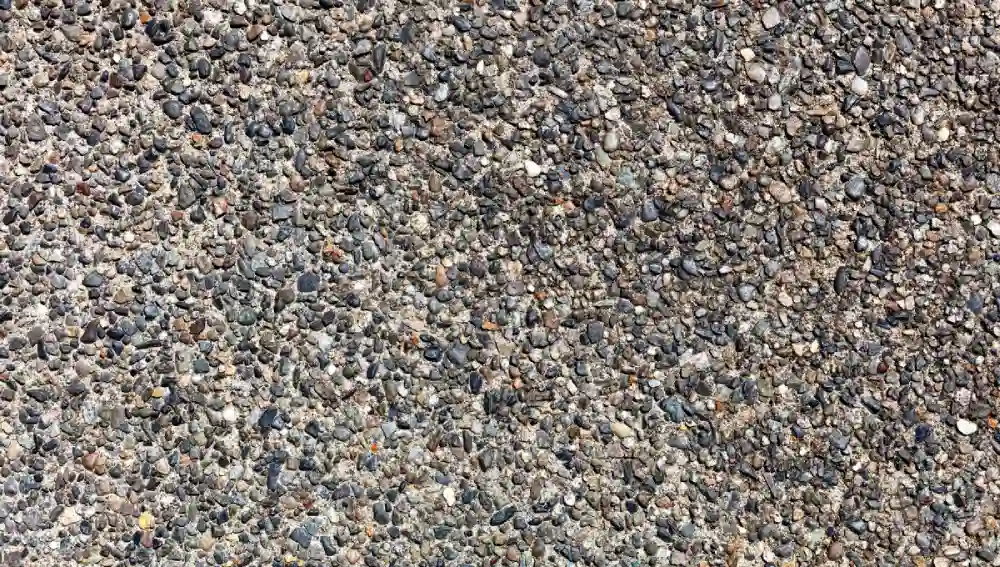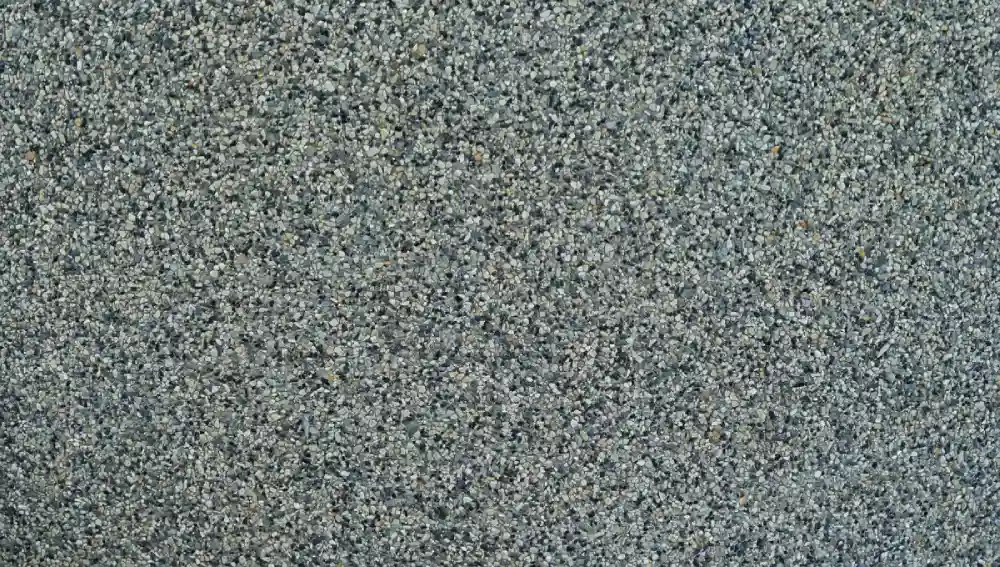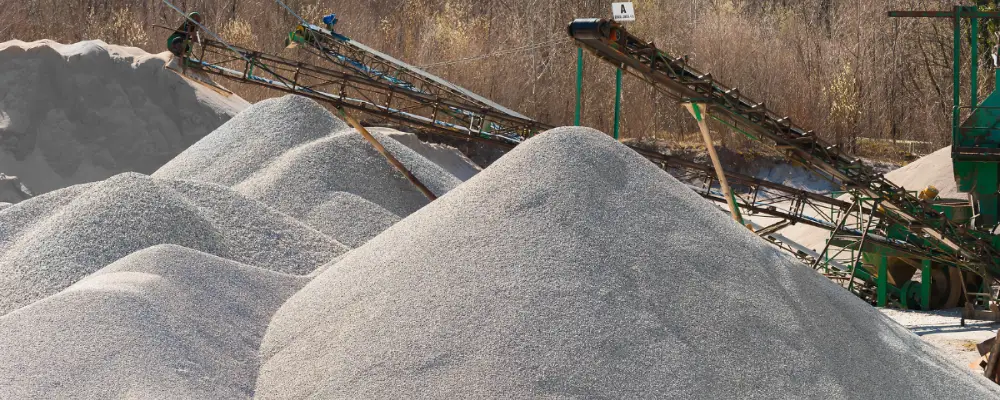Introduction
Fine aggregates are natural materials mostly composed of crushed stone or sand. The fine aggregates are commonly used in construction projects. It is cost-effective and influences the strength, durability, and stability of concrete. The size of the particles must have a diameter of less than 4.75 mm. It delivers 35% to 45% by mass or volume of concrete mixtures. These fine aggregate materials are extracted through the mining process.
What is a Fine Aggregate?

Fine aggregates are defined as inert granular materials. It has many properties that affect the performance of the concrete. The primary sources are gravel, crushed stone, river sand, etc. Its surface area is generally high. Spaces between the coarse aggregates are called voids. Fine aggregates are used to fill the voids that occur in the coarse aggregates.
The fineness modulus of the fine aggregates in the grading zone is between 2.30 and 3.10. The fine aggregate has been in use since ancient times. The extraction and processing of fine aggregates have evolved as technology has. Building structures generally use natural sand. The fine aggregates are dynamic and meet modern construction standards. The purpose of the fine aggregate is to enhance the workability and finish of concrete.
Characteristics of fine aggregate in construction:
Fine aggregate plays a major role in construction. It helps in the production of concrete and mortar. The main functions and benefits of the fine aggregates include:
Gravel and Sand Composition
They are nonrenewable resources, which include grains and fragments of rocks. River sand primarily contains mostly limestone and sandstone.
Comprehensive Strength
The strength of the concrete is affected by the ability of the aggregate to resist a comprehensive load. The size, shape, texture, and content of coarse aggregate play essential roles in determining the strength of concrete. The type of coarse aggregate can also be more important for high-strength concrete because of limitations on the water-to-cement ratio.
The main purpose of fine aggregate is to increase workability. It fills the voids and reduces the amount of cement that is required. This increases the overall strength of the cement mix.
The principal effect of the fine aggregate is achieving the desired density and cohesive mix. It is important to determine the quality of the structure.
Absorption
Absorption refers to the ability of fine aggregates to absorb water. This property significantly determines the water-cement ratio in the concrete mix. Fine aggregates help maintain the integrity of the concrete mix by minimizing excessive water absorption.
Density
It is defined as the mass per unit volume of the fine aggregate. The weight and stability of the aggregate are measured by calculating the density of the materials. The ideal density of fine aggregate ranges from 2.5 to 3 g/cm3.
Porosity
Porosity is the measure of the void spaces that exist within the fine aggregates. It leads to increased water absorption, reducing the strength of the concrete.
Fineness Modulus
The fineness modulus is an index number. It depicts the particle’s mean size in a fine aggregate. The fine aggregates have a fineness modulus between 2.00 and 4.0. The fineness modulus of fine aggregates can be calculated through a systematic sieve analysis, where cumulative percentages retained on specified sieves are totalled and divided by 100.
Specific Gravity
It is defined as the ratio of fine aggregate density to the density of water. It calculates the aggregate volume required to obtain the concrete mix for design. The specific gravity range is from 2.5 to 3.0.
Angularity
Angilarities are defined as the fine aggregate particle’s shape and sharpness of edges. It provides the bonding of cement paste. When compared to round aggregates, these reduce workability.
Properties of Fine Aggregate

Several important properties of fine aggregate can influence the performance and quality of the concrete. The key properties are:
Size
Fine aggregates should have particles smaller than 4.75 mm. Materials like crushed gravel, crushed stone, silt, and clay qualify as fine aggregates.
Strength
Fine and coarse aggregate particle strength is important in determining the overall concrete strength.
Water Absorption
The water absorption in fine aggregates is ideally less than 5%. Depending on the water absorption of the aggregates, it can vary between lightweight aggregates and normal aggregates. In lightweight aggregates, it has a microstructure that leads to absorbing more water. The normal aggregate has less water absorption, less than 3%.
Surface Texture
For fine aggregate, you can have both smooth and round aggregates. However, rough textures provide better bonding for the concrete.
Role of Fine Aggregate in Concrete
- Fine aggregates are used to fill the voids between the coarse aggregate. This includes providing the necessary density and compaction of the concrete mix.
- The fine aggregate determines the workability condition of the concrete. It makes the concrete mix easier with a smooth finish.
- The fine aggregate significantly creates an impact on the strength and durability of the concrete.
- It helps in maintaining the dimensional stability of the cement. The fine aggregate minimises the cracks, leading to reducing the concrete shrinkage.
Uses of Fine Aggregates
- They are used in building bridge roads.
- They have provided a smooth surface for masonry work.
- By choosing the right method of plastering you can bring a smooth finish to ceilings and walls.
- Filling materials for leveling surfaces, including athletic infield material, path fines, track fines, soil amendments, and the base for pathways.
- The base layer below the surface layer for horse arenas and horse stalls
- Concrete: Fine aggregates are a key ingredient in concrete. It also has water and cement. It reduces the amount of water and cement needed. They have properties of durability and compatibility.
- Fine aggregates are used in producing asphalt.
- Fine aggregates are used as a road base.
- Fine aggregates can be used to create foundations for new roads.
- Other construction materials: Fine aggregates have various applications in the making of construction materials. For example: blocks, pipes, and bricks.
- Smooth surfaces: Fine aggregates are best suitable for smooth surface projects. For example: athletic infield material, path fines, track fines, and underneath pavers.
- Soil improvement: Fine aggregates can also be used to enhance soil by improving quality.
Types of Fine Aggregates
Natural Aggregate
River Sand
These are naturally occurring sands. They are obtained from the river beds. It is commonly used in mansory work and concrete.
Sea sand
It is obtained from this seashore. It contains high salt and must be used only after washing.
Crushed Stones and Sand
This is used as a natural sand substitute. It is manufactured by crushing the hard stones.
Manufactured Aggregates
Crushed Gravel and Sand:
It is extracted by crushing the gravel and also used in the preparation of concrete.
Recycled Aggregates
It is obtained from recycled materials used in construction. It helps build sustainability in the construction industry.
Classification of Fine Aggregate
Based on Origin
Natural Aggregates:
The obtained from natural sources like seashores and river beds
Artificial Aggregates:
Industrial methods are used for its production. These include recycled material and crushed stones.
Based on Composition
Siliceous Aggregate
It primarily consists of silica, which is represented by quartz sand.
Calcareous aggregate
The main component is calcium carbonate. For example, limestone sand.
Based on Particle Size
Fine sand
Fine sand aggregate type is obtained from crushed stone particles or natural sand. It has a diameter of less than 9.55 mm. The fineness modulus for this is between 2.2 and 1.6.
Silt
Silt is difficult to remove from the aggregate surface. The particle of silt has a size range between 0.075 and 0.002 mm. It’s also called clayey silt. It is usually determined by mixing water and using sieve analysis.
It has negative side effects on sand. It creates cracks in the concrete and impairs the bonding of particles.
Conclusion
Fine aggregate has an important application in the construction industry. It decides the cement’s stability, strength, and various other factors. The fine aggregate is the key component of the concrete. It makes up to 35-45% of the total volume of concrete mixture. It is generally used in projects that require a smooth surface. For example: athletic infield material, path fines, track fines, and underneath pavers. They may also function as soil amendments, supporting the establishment of high, compact surfaces while providing significant mechanical strength.

